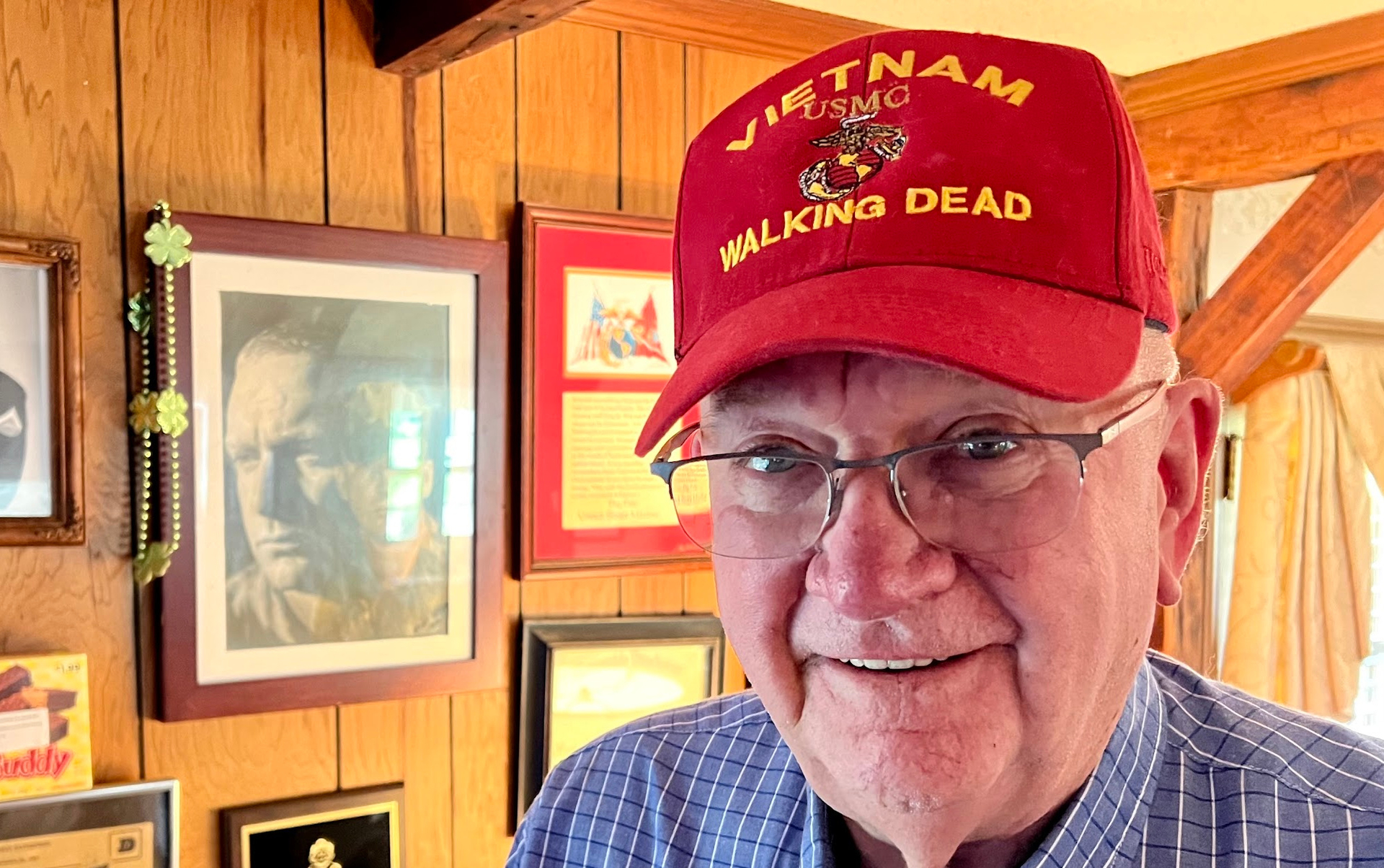
Steve was one of about 60 Marines who stood guard over the funeral of President John Kennedy.
“People stopped asking me about it over the years, which was fine with me. I never brought it up because it was a job, an order like any other order I got. That’s what I thought then and I still do.”
What lingers in the memory is how ordinary the weekend was shaping up to be. Barely 19 and a few months removed from Parris Island, Marine Private First Class Steve Hankins ’75 was loafing in his barracks when a news bulletin shattered the Friday afternoon calm.
President Kennedy has been shot.
A few agonizing hours later, the date Nov. 22, 1963, was seared into a nation’s memory with Kennedy’s assassination. Sixty-one years have passed and the images of that day – and the three days that followed – are no less crisp for residing on the outer edge of Steve’s memory: The announcement on his transistor radio… the six white horses pulling the funeral caisson… the flag-wrapped coffin… the endless line of black automobiles bearing world dignitaries… the clip-clop of horses and cadence of muffled drums.
Those of a certain age recall the nation’s wrenching farewell to President Kennedy in grainy black-and-white memories. Steve remembers in Technicolor. Stationed in Washington, Steve had a front-row view of history. “I think a lot about it when the weather changes,” he says. “I used to not like thinking about it. Now I know I was part of something special – sad but special.”
Before he became a part of Guilford lore by helping the Quakers win the 1973 NAIA National Championship, Steve was a high school graduate in 1962 looking to join the military. As he recalls, the officers in Greensboro’s Army and Navy recruiting centers told him he was too tall and to try the Marines.
The Marines recruiter never measured Steve, who was 6 feet, 7 inches. Instead, the recruiter recorded his height at 6-5. The next day Steve was a Marine, and by November he was stationed in Washington as part of the Marine Presidential Honor Guard.
Hours after Kennedy’s assassination, Steve was part of the security detail at Bethesda Naval Hospital when the First Lady, still wearing the bloody pink suit from the shooting in Dallas earlier in the day, arrived with her husband’s body for the autopsy. When foreign dignitaries arrived to pay respect to the Kennedy family, Steve and other Marines were lined up outside the White House in their starched dress blue uniforms to greet them.
“We were told to look straight ahead and not to eyeball anyone when they walked by,” Steve recalls. Ethiopian Emperor Haile Selassie, covered in ribbons and medals, was the first to arrive. “He walked right past me and it was hard not to stare at all those ribbons,” remembers Steve. “But after a while, so many came in and out you got used to it all.”
Steve and other members of the Presidential Honor Guard led a solemn procession down Pennsylvania Avenue, escorting the horse-drawn caisson from the White House to the Capitol Rotunda.
After President Lyndon Johnson laid a wreath on the casket, police opened the Capitol doors around 2 p.m. to the crowd waiting outside. The building was supposed to close at 9 p.m., but newspapers at the time reported that visitors were still lined up for two miles so officials extended visitation hours through the night.
Despite the long hours and near-freezing temperatures, Steve and the rest of the Honor Guard stood stiff as tin soldiers into the evening. He recalls the profound and prolonged silence throughout. “What I remember was nobody said a word,” he says. “You know nowadays if there was an event for, say, Mr. Trump, people would be running around and rah-rahing, but not that day. I don’t know if it was out of respect or because they were so overwhelmed. There was just this feeling of overwhelming sadness so nobody spoke.”
The next morning Steve was part of the procession bringing the casket back to the White House. Pennsylvania Ave was lined with more than a million people. He says many lowered their heads and removed hats when the coffin passed by them.
Steve went on to serve nine years in the Marines including three tours in Vietnam with the 1st Battalion, 9th Marines, also known as "The Walking Dead." It was a nickname earned for its high casualty rate. The battalion fought in some of the war's most difficult battles and experienced the longest sustained combat and highest killed in action rate in Marine Corps history. “I didn’t serve as much as I survived,” says Steve.
The longtime educator and coach understands and respects his place in history, albeit begrudgingly. “I didn’t do anything to earn that except be there in the barracks when I got my orders,” he says.
Press him and Steve will talk about his role in equal doses of humility, humor and reverence. He understands people’s curiosity, though time has lessened that interest. “People stopped asking me about it over the years, which was fine with me,” says Steve. “I never brought it up because it was a job, an order like any other order I got. That’s what I thought then and I still do.”
But a few minutes later, like time itself, Steve’s perspective changes. “When you’re 19 and put into a situation like that you don’t really think about it the same way you do when you look back now,” he says. “At the time I thought I was just doing my job. I can see now it was more.”

